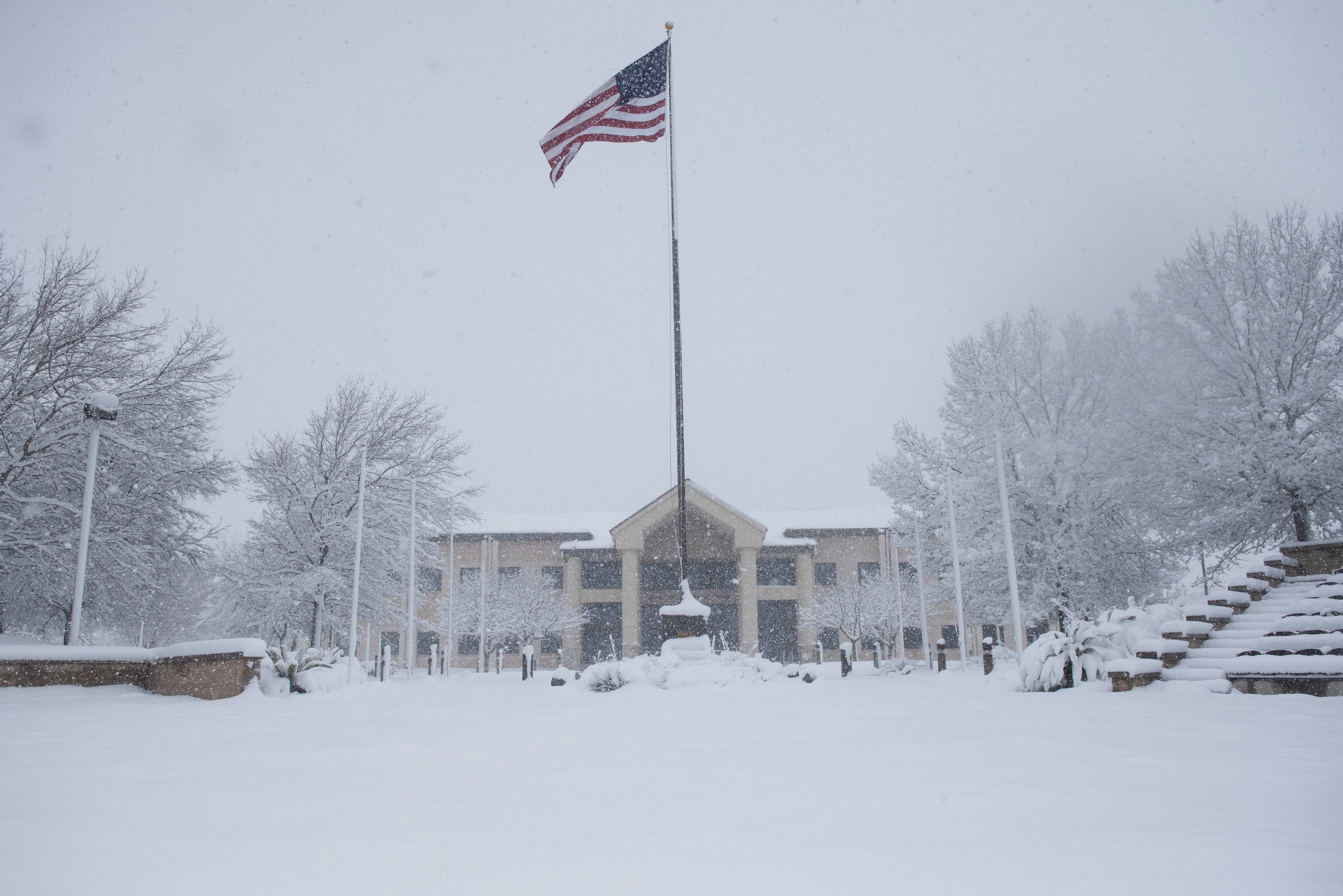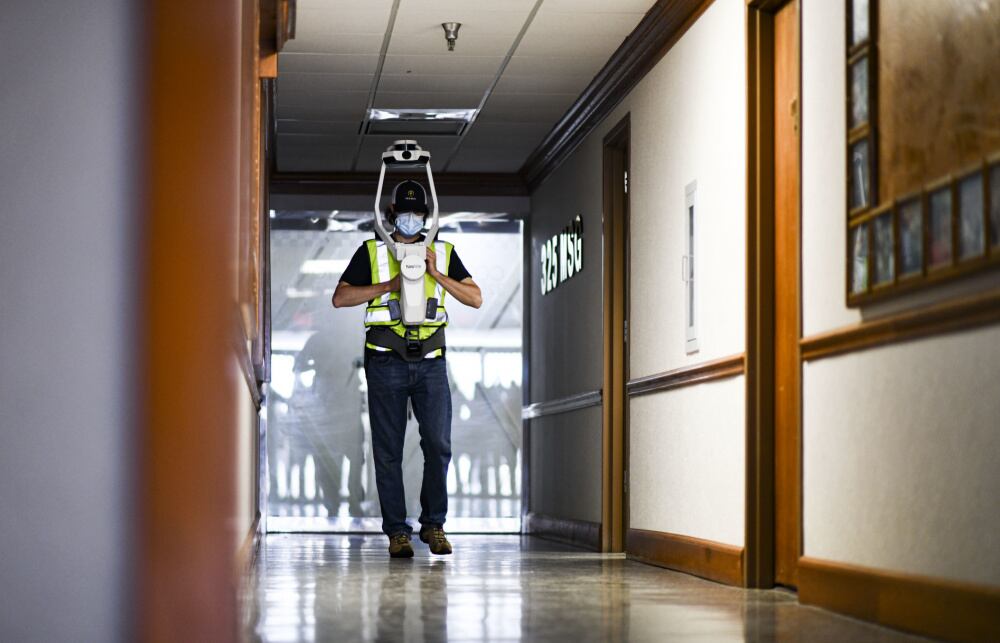Winter storms earlier this year caused more than $72 million in damages at Air Force installations across the country, as well as minor harm to two aircraft — adding to the growing repair bill generated by severe weather in recent years.
Much of the continental U.S. saw unusually low temperatures as well as snow and ice storms at the beginning of 2021, proving particularly challenging in areas unaccustomed to deep winter. The Air Force was not immune to the elements.
Temperature changes caused two issues that affected Air Force planes: One T-38 Talon trainer aircraft incurred damage when a hanger water line broke, and a C-130 was damaged due to a fire-suppression system failure, Air Force spokesperson Sarah Fiocco said.
“Damage was minor and repairs have already been completed,” Fiocco said.
In a separate email, Air Force Special Operations Command declined to answer whether any of its aircraft were affected, citing operational concerns.
Frozen and burst plumbing was the most commonly reported problem at Air Force facilities, along with flooding, water damage, power failures, heating issues, roof damage and other general degradation and outages, the Air Force said. Flooring, carpet and drywall also suffered in the floods.
RELATED

“A vast majority of the damage reported by our installations were relatively small dollar-value issues, but when an installation has dozens, the costs add up,” Fiocco said. “The Air Force continues to assess damage cost, keeping in mind that final cost is affected by decisions to replace or repair facilities, whether some level of demolition is required and other factors.”
Twenty-eight installations sustained damage in the storms: Joint Base McGuire-Dix-Lakehurst, N.J.; Columbus and Keesler AFB, Miss.; Scott AFB, Ill.; Barksdale AFB, La.; Little Rock AFB, Ark.; Whiteman AFB, Mo.; Dyess, Goodfellow, Laughlin and Sheppard AFB, and Joint Base San Antonio, Texas; Altus, Tinker and Vance AFB, Okla.; McConnell AFB, Kan.; Offutt AFB, Neb.; Ellsworth and Grand Forks AFB, S.D.; Minot AFB, N.D.; Cannon and Kirtland AFB, N.M.; Buckley and Peterson AFB and the U.S. Air Force Academy, Colo.; F.E. Warren AFB, Wyo.; Malmstrom AFB, Mont.; and Vandenberg AFB, Calif.
Fiocco said installations immediately began repairing their facilities to keep their missions going. Some, like Dyess, brought together engineers from across the country to fix water-damaged infrastructure, plumbing, and heating and cooling equipment at the bomber base.
The Air Force and Space Force “maintained readiness and mission capability” despite the challenges, she said. A spokesperson for Air Force Global Strike Command, which handles the nuclear arsenal and bombers, said the conditions — like the 36 inches of snow that dropped on F.E. Warren in one storm — did not affect nuclear missile systems.
Off base, the weather upended some airmen’s home lives: Winter Storm Uri, as one spate of dangerous conditions was unofficially named, displaced 175 residents of Air Force privatized housing due to power outages or other damage. More than half returned to their homes within 48 hours; the last displaced resident was expected to go home by April 17.
The severe weather exacerbated existing infrastructure issues across the service — in 2019, the Air Force said it had amassed $33 billion in deferred maintenance on its bases, making facilities more susceptible to weather damage. It also reinforced some best practices for keeping the power on and water running.
“Although the [Department of the Air Force] has invested significant capital over the years to enhance energy resiliency and reduce power and water outages, Winter Storm Uri reinforced the need for collaboration and cooperation with local power and utility providers, and for improving facility energy resiliency through secondary power sources,” Fiocco said.
RELATED

The Air Force pointed to Tinker, which worked with its local electricity provider to reduce the base’s energy consumption to minimize rolling blackouts, and Offutt and Altus, which ran backup power plants on base to take pressure off of their local communities.
“The [Department of the Air Force] is also planning micro-grids in select locations to reduce the dependency on local utility networks and focusing enterprise-wide investment toward renewable energy systems, which function independent of commercial power,” Fiocco added.
As in previous storms, Uri revealed where Air Force facilities could do more to withstand severe weather — including adding more insulation than called for by local building codes in the South to keep pipes from freezing. The service expects to address those concerns through new energy plans at each base.
“Installations must proactively prepare for weather-related impact through master planning, infrastructure investments, facility and equipment maintenance, and emergency response and continuity of operations planning,” Fiocco said. “Although our just-in-time preparations help reduce the impact of the storm at some installations, in many cases, just-in-time was not enough.”
Rachel Cohen is the editor of Air Force Times. She joined the publication as its senior reporter in March 2021. Her work has appeared in the Washington Post, the Frederick News-Post (Md.), Air and Space Forces Magazine, Inside Defense, Inside Health Policy and elsewhere.




